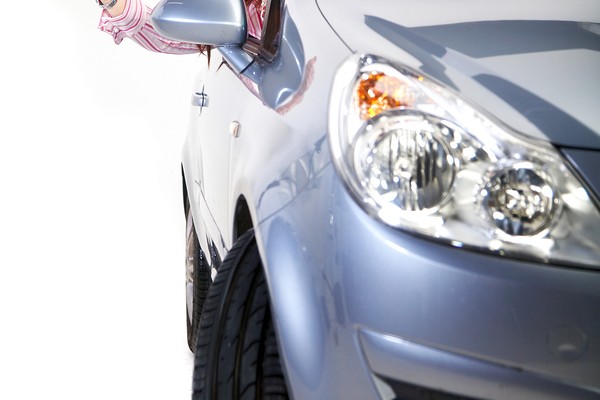
Teaching Teens to be Safe Drivers
March 30, 2014
It’s hard for parents to let go and send their teens out into the world, especially when that world is full of all the dangers that come with driving. However, the National Safety Council is here to help, with a great read on teaching teens to become safe drivers. See the full article here:
http://www.nsc.org/safety_road/TeenDriving/Pages/WhatParentsCanDo.aspx

Texting and Driving Simulator
March 29, 2014
There have been a lot of distracted driving campaigns aimed at teen drivers lately, however, Creative Visions is one organization is taking that message to another level. With $31,000 awarded by State Farm, the group has created a simulator that shows teens the dangers of texting and driving. See the full story here:
http://www.woi-tv.com/story/25104558/kids-try-out-texting-and-driving

Technological Safety
March 29, 2014
Cars are becoming smarter every day, companies are constantly innovating, and psuedo-futuristic technology is always being tested and making headlines. However, several technological safety features have been on the market for years now, with some being available in more affordable cars. So, if you’re looking for a safe new ride then keep an eye out for these life-saving extras:
Adaptive cruise control. Forward-looking sensors automatically reduce speed as traffic slows down.
Forward collision avoidance system. Forward-looking sensors alert drivers when their vehicle gets to close to the one in front of it.
Autonomous braking. Exactly what it sounds like. If the vehicle gets too close to another vehicle, it automatically brakes to prevent a collision or lessen the impact.
Adaptive headlights. Headlights that aim in the direction that the driver steers.
Backup camera. Gives drivers a better view when reversing.
Backup sensors. alerts drivers when they are about to hit something while backing up.
Side view assist. Detects other vehicles in a blind spot and alerts the driver.

10 Longest Lasting Cars
March 28, 2014
Buying a car is a big deal. It takes lots of money, lots of time and a whole lot of patience. So, buy a car that’s worth the effort, a car that will last for years and years. That way you don’t have to suffer through the headache again for a very long time.
How to Keep a Clean Driving Record
March 28, 2014
If you’re getting a drivers license for the first time, then there’s one really great thing you have to look forward to: a perfectly clean, pristine driving record!
Keeping that record clean, however, is extremely difficult. In fact, if you ask anyone who has been driving for a few years, chances are they have gotten at least one ticket. Go ahead and ask the most responsible person you know. If they are telling the truth (and can remember back to their teenage days) they will recall the one time they received a speeding ticket or other moving violation.
This doesn’t mean it’s impossible to keep your own record clean, though. We’ll get to that in just a minute. First, let’s talk about why it’s so important to maintain a good driving record.
A person’s driving record affects many other aspects of their life. Any type of traffic ticket or accident is permanently recorded by the department of transportation, which can then be accessed by insurance companies, employers, police officers, bank lenders, lawyers and even landlords. Anyone who wants to know your level of responsibility can view these records. That means that a bad driving record could result in much higher insurance rates, and even affect your ability to get coverage in the first place. It could also limit your employment options, especially in jobs that require a car for commute or driving during work hours. On the other hand, a clean driving record is a sign of great responsibility. It makes you look like a more dependable person, which results in lower insurance rates and better employment opportunities.
Addtionally, most states have a point system to prevent dangerous and careless driving. Every time you get a ticket, you get points added to your license. Accumulate too many points, and your license can be suspended or revoked, with extremely high fees for reinstatement.
So, how can drivers strive to keep their records clean? The first, and quite obvious, tip is to obey the law. Even minor traffic infractions can result in a ticket. This includes tailgating, failing to signal a lane change, failing to come to a complete stop at a stop sign, failing to yield the right of way, wearing your seatbelt improperly (or not at all), having a busted tail light, etc. Then there’s the major driving infractions, such as speeding, DWI’s, and leaving the scene of an accident. These will weigh more heavily on your record, and could even result in a felony conviction.
Besides avoiding traffic tickets, you also have to avoid traffic accidents. This means driving safely and never driving while distracted. In inclement weather, drive a little slower and give other vehicles more space so that you have plenty of time to slow down or come to a stop when needed. When driving in rural areas, watch out for wildlife. When driving in urban areas, watch out for cyclists and pedestrians. If you do have a minor accident, especially if you are the only vehicle/person involved, it might be better to pay for the damages yourself than to file an insurance claim. This way you can avoid having the incident added to your record, and also avoid a significant rate hike.
Moving violations and traffic accidents are the usual suspects, however, you must also stay on top of the typical paperwork to prevent other violations that could hurt your record. Make sure your insurance is always up to date and paid on time. The same goes for your registration. Get your vehicle inspected before the sticker expires each year. And, always have your insurance and drivers license on you when operating a vehicle.
Now, nobody is perfect. Even if you take all the precautions and try to be a safe, respectful, law-abiding driver, you still might end up with a traffic ticket one day. However, this doesn’t mean you can’t keep that record clean. Many states offer defensive driving courses that drivers can take to dismiss their traffic violations. Visit defensivedriving.com for more details.
How to Help Prevent Traffic Jams
March 27, 2014
We’ve all experienced it: the dreaded traffic jam. Sometimes these frustrating backups are caused by accidents or construction, however, there is another breed of traffic jam that is born out of the simple act of bad driving.
Last year, an MIT professor presented an algorithm that could be used in smart cars to alleviate traffic flow problems. Berthold Horn, professor in MIT’s Department of Electrical Engineering and Computer Science, came up with the idea after suffering through the heavy traffic on Massachusetts’ Interstate 93. He explained that backups occurred as a result of variations in speed, which were magnified as they passed through a lane of traffic. One driver would slam on their brakes, causing the driver behind them to do the same, and so on, until cars at the end of the line became backed up, as we often see on highways and interstates. If you’re having trouble wrapping your head around this visual, check out the simulator posted on the MIT website.
The proposed solution was an innovative cruise control system that measured the distance and velocity of vehicles behind and in front of the car, adapting the speed to stay roughly halfway between the two. This way, the car wouldn’t have to slow down as drastically if the vehicle in front braked, and the car would also be less likely to pass on the dramatic change in speed to the car behind it.
However, we don’t necessarily need technology to overcome this traffic flow problem. We simply need to learn how to drive correctly, and foster a culture that encourages smart drivers. If every driver kept their vehicle a reasonable distance behind the person in front of them (1 – 5 car lengths depending on the speed), then we could effectively achieve an ideal state of traffic flow.
Of course, we don’t live in a perfect world with perfect drivers. Most drivers have a “me first” mindset, many are driving full of road rage, and far too many are driving distracted. Then, there are the drivers that fly across three lanes of traffic with no blinker, the drivers that tailgate and brake-check, and the drivers that like to switch lanes every two seconds. All of these things cause disturbances in the normal speed of traffic flow, causing people to slam on their brakes, causing the cars behind them to slow down drastically, and so on all the way down the line until the inevitable backup occurs. This is why we all have to sit in traffic in the middle of a 70 mph interstate with no stop lights, no construction and no accidents. This is how traffic jams are born.
So, be a smart driver and encourage everyone you know to do the same. It’s the quickest and simplest solution… at least until computers begin to do it for us.
The Future of Collision Prevention
March 27, 2014
The 2015 Hyundai Genesis is another vehicle in a growing list of technologically advanced cars geared towards protecting drivers with smart safety features. This particular sedan features the new Automatic Emergency Braking system, which is demonstrated in a blind (literally, BLIND!) test, where stunt driver Rhys Millen gets behind the wheel of the Hyundai Genesis with blacked-out windows and proceeds to drive it straight towards another vehicle.
Houston’s Pro-Cyclist City Plan
March 26, 2014
Houston has taken a huge step towards improving bicycle safety. “By working together we can become one of the most bicycle-friendly cities in the nation,” Mayor Annise Parker said in a press release. That’s big news for a big city that isn’t known for its bicycle-friendly infrastructure. However, city officials and safe-biking activists have collaborated to create plan that just might work.
Dubbed “Goal Zero”, the improved safety plan includes stepping up enforcement and penalties for reckless drivers and cyclists, and launching a public awareness campaign that could integrate with the drivers license test. Additionally, the city is dedicating $50,000 to hire a firm that will create a Bicycle Management Plan to help guide future infrastructure and recommend locations for dedicated bike lanes on Houston streets.
No matter what city you are in, respecting and sharing the road with cyclists is vital to ensuring everyone’s safety. Give cyclists plenty of room, pass with care and don’t ever, ever drive distracted.
Lights, Camera, Action!
March 26, 2014
It took 11 months, 3,000 pictures and a lot of coffee to rebuild his engine. What he did with the images afterwards is a benefit to all of us wanna-be mechanics and future engineers… not to mention Fantasia fans.

